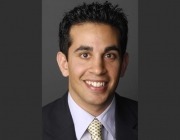17 May Active Surveillance Can Be Expanded To Select Group of Younger Men With Prostate Cancer
MedicalResearch.com Interview with:
Keyan Salari, MD, PhD
Resident in Urologic Surgery
Keyan Salari is currently completing his residency in the Harvard Program in Urologic Surgery at the Massachusetts General Hospital, and is conducting post-doctoral research in cancer genomics in the
Garraway Lab at the Dana-Farber Cancer Institute
and the Broad Institute of Harvard and MIT
MedicalResearch.com: What is the background for this study?
Response: Active surveillance is an effective strategy addressing the problem of over treatment of clinically indolent prostate cancer, but data on the role of active surveillance in younger men is limited. Younger men diagnosed with prostate cancer are typically counseled to undergo treatment as opposed to surveillance of their prostate cancer.
To potentially expand the role of active surveillance to younger patient populations, we undertook this study evaluating the outcomes of younger men under 60 years of age who elected to pursue active surveillance of their prostate cancer.
MedicalResearch.com: What are the main findings?
Response: We found that men under 60 have acceptable outcomes on active surveillance, similar to older men with respect to the rates of undergoing prostate cancer treatment and prostate cancer-specific survival. At 5 years on surveillance, roughly three-fourths of men remained free from treatment, and by 10 years, over half of men were still free from treatment. We also identified higher tumor volume and PSA density as risk factors for failing active surveillance.
MedicalResearch.com: What should readers take away from your report?
Response: Overall, we found that active surveillance is a safe and effective management strategy for properly selected men under 60 years of age, allowing us to expand the use of this management strategy to this younger group of men. This work is important because our younger patients tend to be more concerned over the sexual and urinary side effects of treatment, and this work provides much-needed evidence that properly selected men can safely avoid or delay treatment for a significant amount of time by employing an active surveillance strategy.
MedicalResearch.com: What recommendations do you have for future research as a result of this study?
Response: Our next steps are to perform genomic sequencing of these patient tumors to help determine whether, in the future, a genetic test could be used for men newly diagnosed with prostate cancer that would help predict their risk and determine their eligibility for active surveillance.
MedicalResearch.com: Thank you for your contribution to the MedicalResearch.com community.
Citation:
Active Surveillance for Low-Risk Prostate Cancer in Men Under 60 Years of Age:
Note: Content is Not intended as medical advice. Please consult your health care provider regarding your specific medical condition and questions.
More Medical Research Interviews on MedicalResearch.com
[wysija_form id=”5″]
Last Updated on May 17, 2017 by Marie Benz MD FAAD

